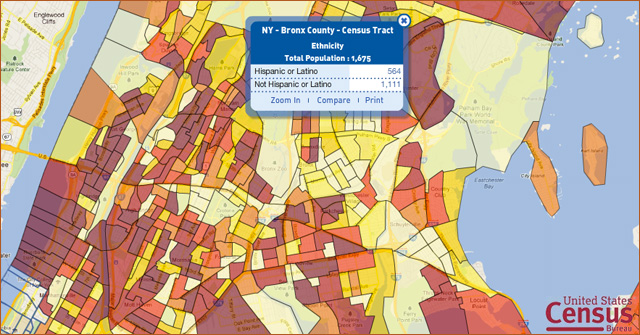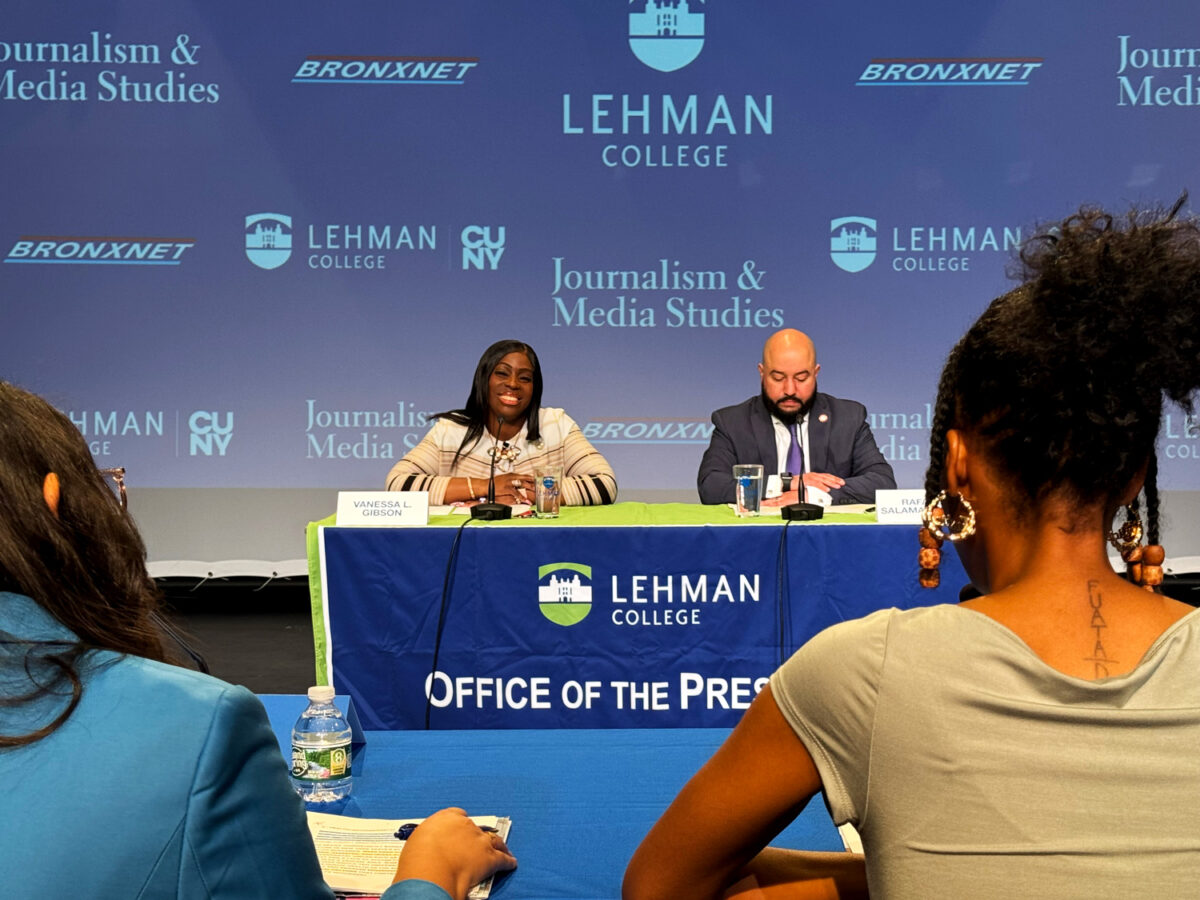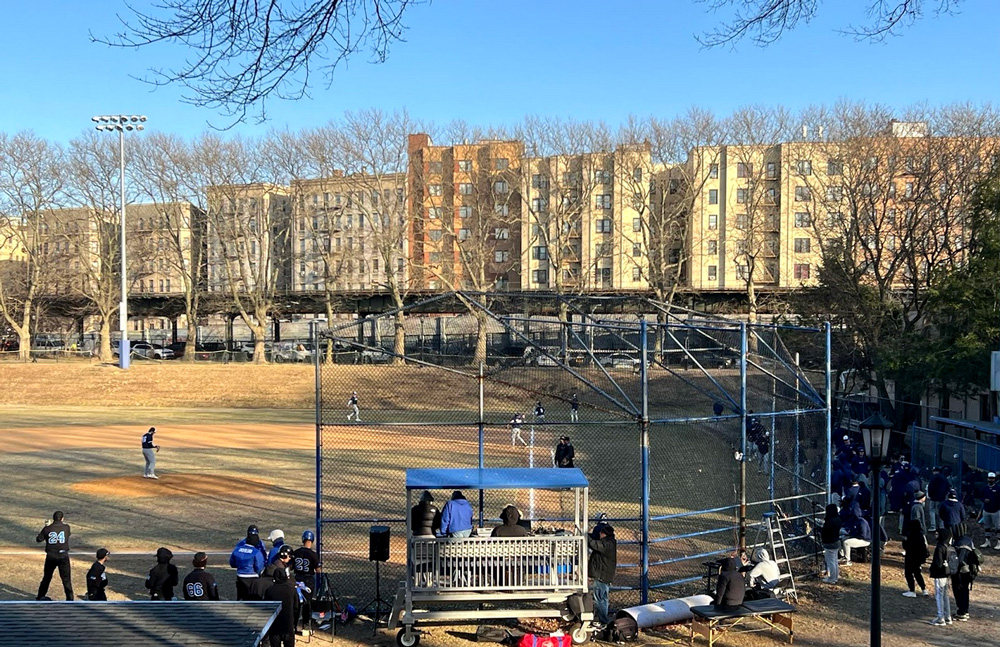By Lennin Reyes
Bronx Journal Staff Writer
Every 10 years following the census, states redraw districts in order to reflect population changes. The House of Representatives has a mandatory 435 members. This number doesn’t change, but the number of seats per state changes. New York is set to lose two Congressional seats to other states this year due to higher growth in other states.
This is a controversial process because political power is on the line. The result is a game of musical chairs, with minorities, special interest groups, local party leaders and incumbents scrambling for seats.
“The process becomes a political theater,” says Columbia University Political Science professor Rodolfo de la Garza. “Deals are made to create new minority seats while maintaining seats for incumbents in the process.”
Redistricting determines which ethnic groups will lose or gain power and brings funding for schools, parks and transportation. Most people aren’t aware of the process. “People do not care about politics because they don’t know about the direct benefits,” Woodlawn resident Mary Sharpe said. “One person could determine the difference between an election loss, win or draw.”

Charlie Rangel
The process begins with a series of public meetings held throughout New York State by the state’s Task Force on Demographic Research and Reapportionment (LATFOR). Special interest groups and other groups propose districts to empower minorities. Afterwards, political leaders meet with mapmakers to discuss various proposals. Friction arises between the various parties involved because no incumbent wants to lose his/her district. If districts are not created by a certain time, courts step in to draw districts based on the Voting Rights Act and other factors.
Currently, Congressional districts in Upper Manhattan, The Bronx and Westchester reflect the 2000 Census. Upper Manhattan, along with Rikers Island in The Bronx and the Con-Edison Plant in Astoria are in Charles Rangel’s 15th District. While Hispanics are the majority, African-Americans in Central Harlem are the political center. Jose Enrique Serrano’s 16th District includes parts of The Bronx that are west of the Bronx River and south of 196th Street. Joseph Crowley represents the east Bronx and north-central Queens in the 7th District, neighborhoods shifting from largely white to largely Hispanic. As for the northern Bronx, those residents are in Eliot Engel’s 17th District, which includes parts of Westchester and Rockland counties. Going into 2012, these districts are expected to change to evenly distribute power among blacks, Puerto Ricans and Dominicans.
While blacks have strong political clout in Charles Rangel’s 15th district, black population in that district (as well as the central Bronx) has declined since the late 1980s, as Hispanic populations have grown. Eventually, Hispanics could outvote blacks and incumbent Charlie Rangel. This concern could be resolved by a floating proposal that would have Charles Rangel’s district include Central Harlem, central and northeastern Bronx neighborhoods such as Morrisania, Co-op City and Wakefield, before ending in Mount Vernon in Westchester County.

Ruth Hassell Thompson’s 36th Senate District
While this district ensures black representation for these communities, it may cause a power struggle between low-income blacks in Harlem and the South Bronx and their suburban counterparts in Mount Vernon and the Northeast Bronx, something already seen in Ruth Hassell Thompson’s 36th State Senate district (above). According to LATFOR, the 36th district is 62.58% black. While her district is mostly comprised of suburban blacks in the Northeast Bronx and Mount Vernon, the district snakes south into low-income black areas like West Farms, Morrisania and Concourse Village. This results in low-income issues, such as housing project security and public assistance, being overshadowed by suburban interests.
The proposal for Rangel’s district coincides with requests from the Dominican-American National Roundtable to create a largely Dominican Congressional district that includes Washington Heights, the northwestern Bronx and southern Yonkers. Unlike the prior proposal, their proposed adjacent district for the blacks would connect suburban black areas to Harlem via Interstate 678. While the district increases the chances of electing the nation’s first Dominican representative, there are several roadblocks to achieving this goal.

Eliot Engel
The first roadblock is 23-year incumbent Eliot Engel (D-Riverdale). He is no stranger to serving minorities as his district was heavily black in the 1990s. He fended off a challenge from then-State Senator Larry Seabrook (D-Co-op City) in 2000. In addition, Engel’s staff help immigrants in dealing with the immigration system, thus allowing Dominicans to become U.S. citizens and to eventually register to vote. Engel’s track record with minorities and immigrants would make him a prime candidate to serve the Dominicans of Upper Manhattan and the northwest Bronx.
A growing problem is the division among Dominican politicians. They disagree on the shape of the new district, and worry that a Dominican might not win the seat. Another dispute is the selection of the Dominican candidate. Some prime candidates include State Senator Adriano Espaillat (D-Inwood) and beleaguered State Assemblyman Guillermo Linares (D-Marble Hill). Espaillat may make for a good candidate, but Linares’ past corruptions and subsequent banishment from the Dominican Day Parade may haunt him. This division was evident in an event sponsored by the DANR, where other Dominican politicians boycotted the Linares-attended event. The division among Dominican politicians may result in vote splitting, which could prevent the group from winning the seat.
The remainder of The Bronx, along with East Harlem in Manhattan, would end up in Jose Serrano’s district. Serrano would add eastern neighborhoods of Soundview, Parkchester, Morris Park, Castle Hill, Throggs Neck, City Island, Pelham Parkway and Westchester Square. Although the additions of largely-white Throggs Neck and Morris Park could mean a challenge from a white candidate, Serrano’s popularity and the eastward movement of Puerto Ricans into these white communities would not spell any serious trouble for the 21-year incumbent.
The biggest roadblock to creating these proposed districts are political leaders, such as Senate Majority Leader Dean Skelos (R-Nassau) and Assembly Speaker Sheldon Silver (D-Lower East Side), who have serious political pull to influence district shapes. In the case of the Republican-controlled State Senate, their goal is to expand control in a state where Democrats outnumber Republicans. This idea has been highlighted in several instances. In 2002, Republicans retained the 34th Senate District (below), whose horseshoe-shaped district includes conservative white neighborhoods in The Bronx and Westchester. At the time, the seat was held by Republican Guy Velella. He lost to Democrat Jeff Klein in 2004. Although Hispanics are growing in the aforementioned Throggs Neck and Morris Park communities, Klein’s seat may remain the same thanks to Republicans’ alliance with Klein’s Independent Democratic Caucus.

34th Senate District, the epitome of a Republican Gerrymander
While Republicans have the privilege of having a big say in drawing districts, it may not be that way for long. Former mayor Ed Koch has proposed the creation of a non-partisan, independent group that would oversee redistricting. Many politicians support the proposal. However, it would most likely not be implemented until the 2022 redistricting, due to fears of Republicans losing the Senate majority.
In addition to this proposal another to count prisoners based on their districts of origin instead of the districts that house correctional facilities. While this may add population to low-income minority communities, rural communities upstate could lose political clout. “Prisoners should not be counted in districts at all while serving their sentence,” said Lehman College journalism professor James Carney. “Besides, those with a felony cannot vote anyway.” With the Republicans’ desire to maximize their control in the Senate, these two proposals may not get far.
The combination of maintaining a Republican majority in Congress and the State Senate, along with the desire and demand for more minority districts, could make the 2012 edition of redistricting a battle to remember.








No comments